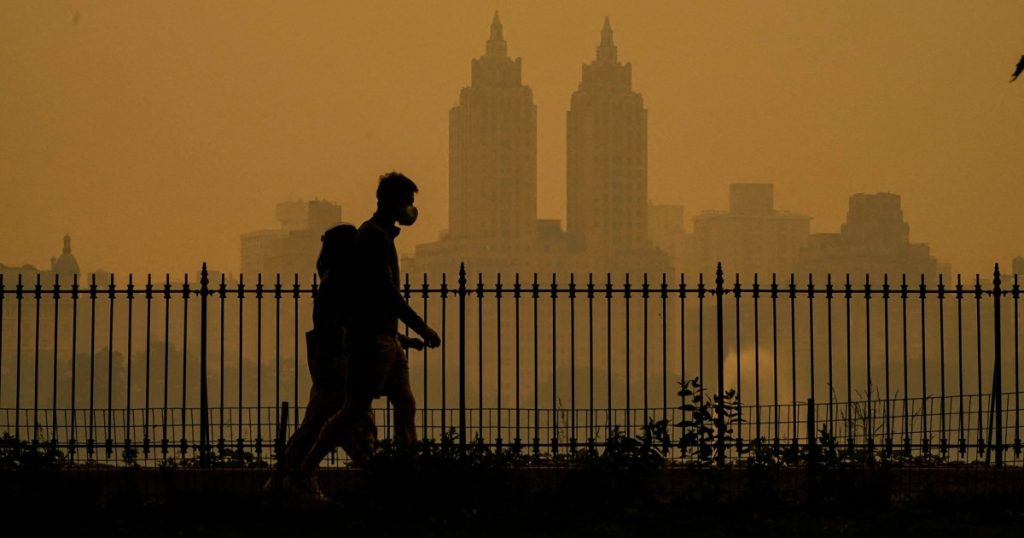A new report from the American Lung Association reveals that nearly 40% of people in the U.S. are living in areas with unhealthy levels of air pollution, marking a backslide in clean air progress as the impacts of climate change intensify. The report, which is the 25th annual analysis of the “State of the Air” in the country, shows that between 2020 and 2022, 131 million people were exposed to unhealthy air pollution levels, indicating an increase of nearly 12 million since the previous survey. Moreover, the report notes that the U.S. experienced more “very unhealthy” or “hazardous” air quality days than ever before, signaling a concerning trend for public health.
Climate change is identified as a significant contributor to the deterioration in air quality, undoing decades of cleanup efforts established through the Clean Air Act, which was passed in 1963 to regulate air pollution and set air quality standards. The rise in heat, drought, and wildfires due to climate change have eroded the progress made in air quality improvement, posing health risks to people living in areas with poor air quality. Wildfires are identified as a rapidly growing source of pollution that policymakers are struggling to address, with wildfire smoke projected to increase in the future as greenhouse gas emissions drive temperatures higher.
The analysis presented in the “State of the Air” report focuses on ozone exposure, short-term, and year-round particle pollution exposure, assigning grades to each measure to evaluate the air quality in different areas. The report highlights the concerns related to small particles, which can penetrate deeply into the lungs, enter the bloodstream, and affect other organs. These particles, which are smaller than a human hair, have been linked to an increased risk of asthma, lung cancer, chronic lung diseases, preterm birth, and other adverse health outcomes. The report also notes the impact of wildfire smoke on pregnancy outcomes, with observations of an uptick in preterm births during heavy wildfire events.
Notably, the report points out a shift in particle pollution concerns from the industrial Midwest and Northeast to the West, specifically in California. Previously, particle pollution largely originated from coal-fired power plants, transportation sources, and industrial processes. However, with the Clean Air Act addressing these sources in the eastern U.S., the West is now facing particle pollution challenges exacerbated by climate change and wildfires. While regulations have helped improve air quality in the East, the West continues to grapple with pollution issues stemming from wildfires and climate change impacts.
Efforts to reduce pollution from transportation and industrial sources are ongoing, with the Environmental Protection Agency proposing more stringent standards to curb emissions. Stricter rules have been implemented to reduce tailpipe emissions from passenger vehicles, and a policy aimed at reducing nitrogen oxide pollution is being challenged in the Supreme Court. Despite these challenges, a bright spot in the report is the improvement in ozone pollution, with fewer people living in areas with unhealthy levels of ozone pollution compared to the previous year. However, the worsening impact of wildfire smoke, as evidenced by record-high exposures in recent years, underscores the urgent need to address air quality challenges and mitigate the effects of climate change on public health.


